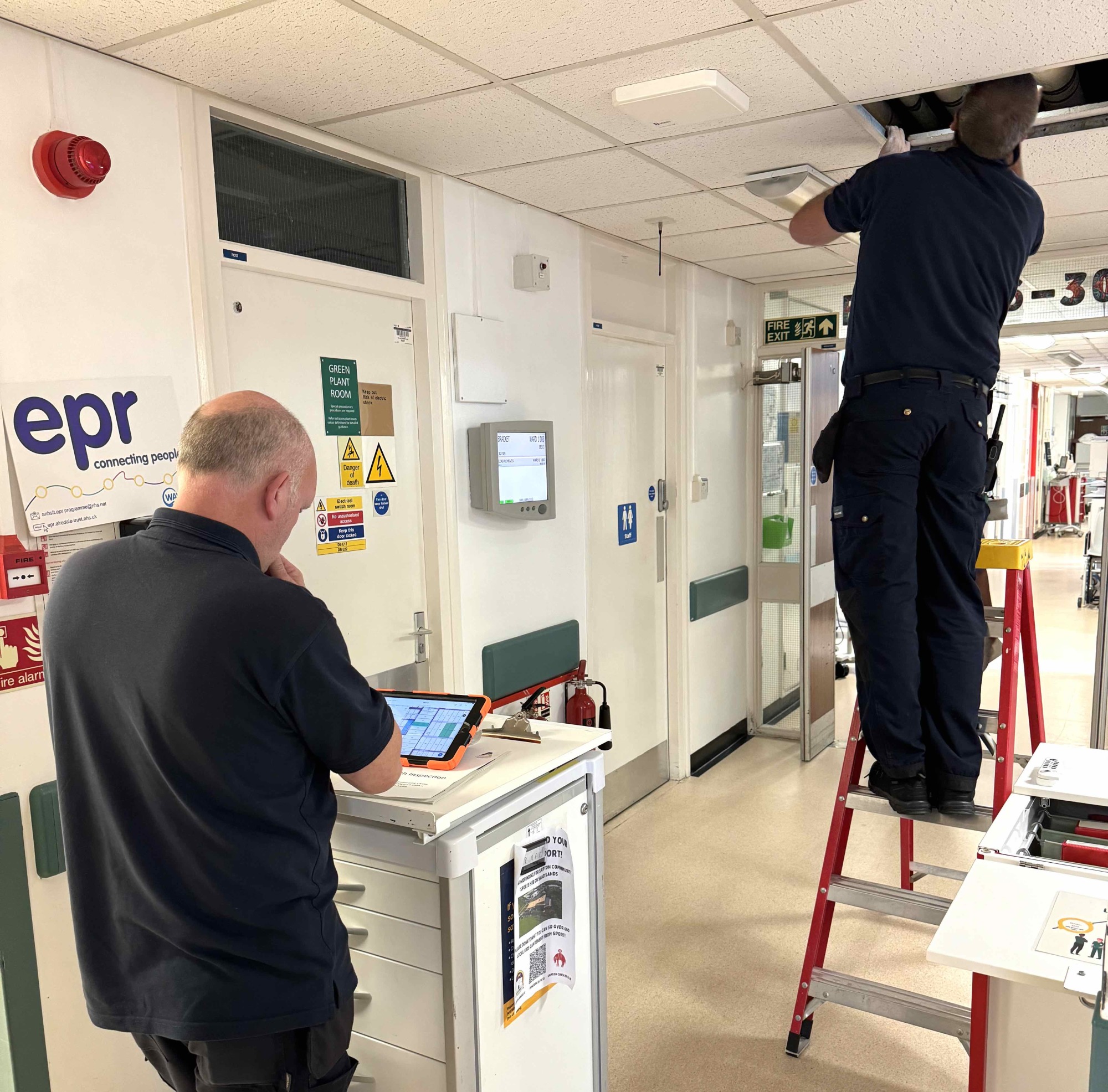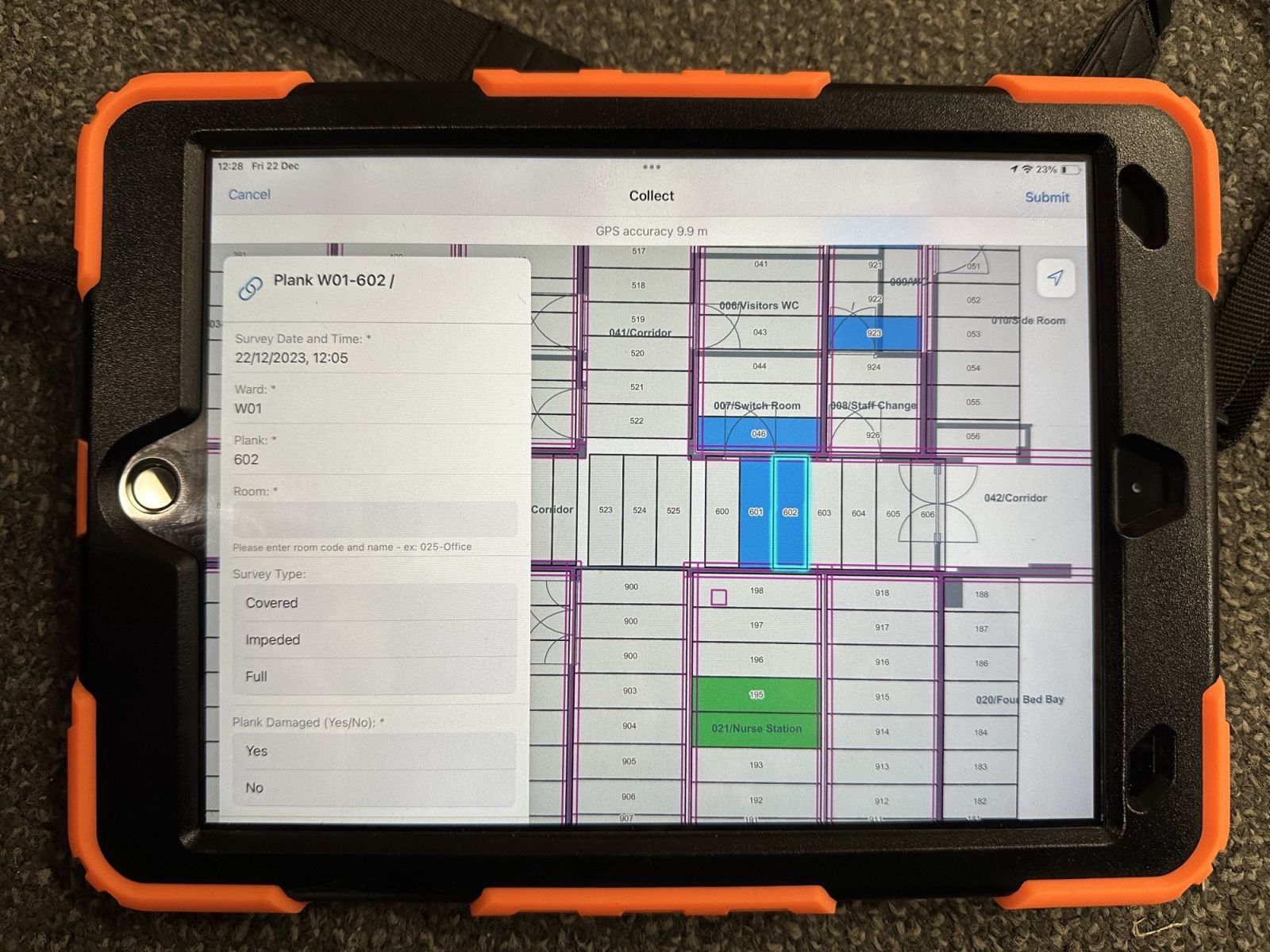What’s Happening With the New Hospital Programme?
The government has changed its timetable for the New Hospital Programme, saying it inherited a “unfunded and undeliverable” plan from the previous...
Read Full Article
Airedale General Hospital in West Yorkshire is using a new geospatial system to help manage its RAAC monitoring and repairs programme.
The software from Esri UK replaces the need for hand-written surveys to record defects, instead revealing where the highest risk areas are in real-time.
The surveying process at the site involves a team of eight inspecting 20,000 RAAC planks across 52 departments. Airedale General Hospital has one of the highest quantities of RAAC panels in the NHS, with 83 per cent of the hospital’s floors, walls and ceilings made of the material. Built in the late 1960s, the hospital near Keighley, West Yorkshire first discovered its RAAC problem five years ago and is due to be rebuilt by 2030 as part of the government’s New Hospital Programme.
RAAC hit the headlines in August 2023 when The Department for Education announced that over 100 schools in England will need to close buildings because they are at risk of collapse due to the presence of RAAC, just days before the start of the autumn term. The government and related bodies have been aware of the limitations of RAAC since the 1990s, when several bodies recognised these structural deficiencies in RAAC panels, reporting cracking, excessive displacements and poor durability.
Previous investigations at Airedale were reliant on a manual process where surveys were written by hand, and transferred into an Excel spreadsheet, with photos uploaded manually and separate paper floor plans updated to show the changes to risk across each ward.
The new system tracks how different sections of RAAC planks deteriorate at different rates, and patterns of change can be seen and investigated on an estate map, overlaid with drone imagery.

Picture: a photograph showing a tablet showing a screengrab from the Esri GIS system showing a map of RAAC planks and its attached data. Image Credit: ESRI UK
Richard Burgin, Estates Project Manager, said “The existing manual survey process was not capable of dealing with the sheer volume of work. It became obvious the hospital needed a single, joined-up view of RAAC risk to generate the inspection frequencies and the ongoing programme of remediation works.
“The Esri GIS has given us a more robust and resilient process, with a reduced risk of human error that instantly shows different levels of risk so we know where to focus. RAAC has a major operational impact, sometimes disturbing clinical and operational functions so surveys and mitigation work needs to be accurate and fast and the system underpins that.”
Picture: a photograph of two people working on a hospital ward, one is using a tablet and the other is on a ladder looking above one of the ceiling tiles. Image Credit: ESRI UK
Article written by Ella Tansley | Published 07 May 2024
The government has changed its timetable for the New Hospital Programme, saying it inherited a “unfunded and undeliverable” plan from the previous...
Read Full ArticleUnsafe hospital buildings in England that pose a risk to patient and staff safety will be prioritised with new funding to rebuild them by 2030. Airedale in West...
Read Full ArticleLord Markham CBE has stated that the New Hospital Programme will only be possible by radically transforming the way building engineering projects are procured and...
Read Full ArticleOver 15,000 tonnes of concrete from the decommissioned nuclear site Sizewell A will be reused in the construction of the new Sizewell C power station. The concrete is...
Read Full ArticleCBRE Global Workplace Solutions will partner with East London NHS Foundation Trust to improve hard FM delivery across its estate. CBRE will deliver hard...
Read Full ArticleThe government has confirmed timelines for the complete removal of Reinforced Autoclaved Aerated Concrete from schools and colleges in England. The...
Read Full ArticleCan sharing infrastructure in the public sector optimise space, reduce costs and eliminate duplicated efforts? Matt Etherington, Public Sector Workplace...
Read Full ArticleDavid Stevens, Director of Estates & Capital Development at East London NHS Foundation Trust, has been named a UK Construction Week Icon for 2025. Announced at the...
Read Full ArticleSodexo Health & Care has secured an extended contract to provide patient dining services for the Chesterfield Royal Hospital NHS Foundation Trust. Following a...
Read Full ArticleAnalysis from the Chartered Institute of Housing highlights a connection between housing quality and health outcomes, predicting that retrofitting social homes could save...
Read Full Article